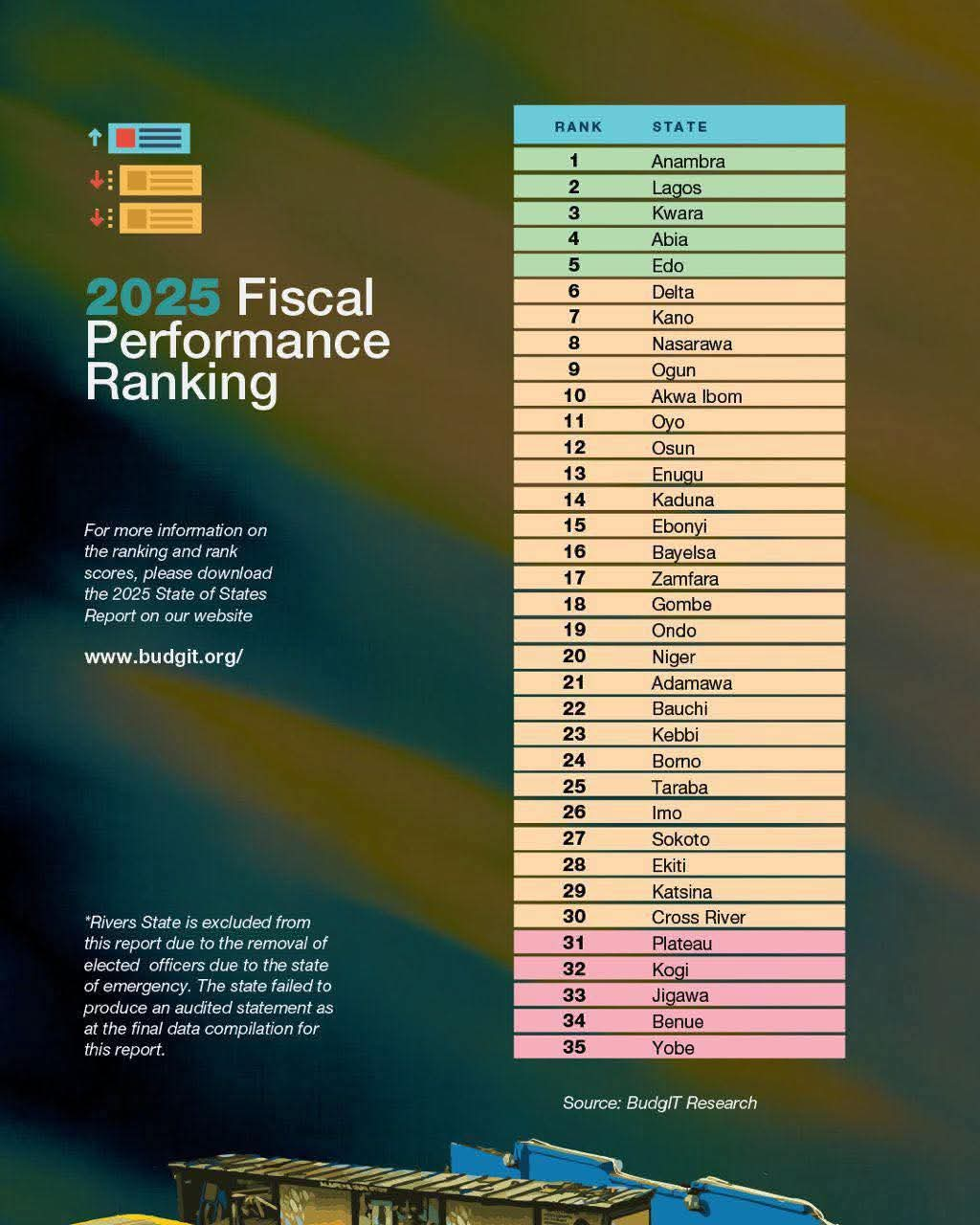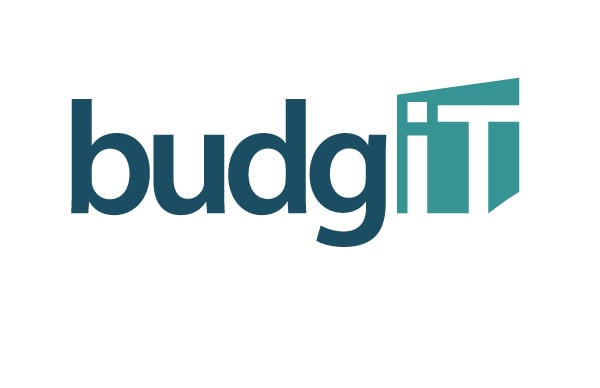Anambra Tops 2025 Fiscal Performance Rankings, Lagos, Kwara Follow Close – BudgIT Report.
Onyebuchi Onwuchekwa
Anambra State has emerged as the top performer in the 2025 Fiscal Performance Ranking, according to BudgIT’s State of States Report.
Lagos, Kwara, Abia, and Edo rounded out the top five, while Cross River saw a significant drop from 5th to 30th place. Rivers State was not included in the report due to a lack of audited data.
The report highlights Anambra’s rise from second place to first, with the state demonstrating strong fiscal management.
Rivers State, a consistent top-five performer in previous years, was excluded from this year’s report due to the state of emergency declared earlier in the year, which prevented the release of audited data.

In a statement shared on X (formerly Twitter) on Tuesday, BudgIT described this year’s edition—titled “A Decade of Subnational Fiscal Analysis: Growth, Decline and Middling Performance”—as a milestone marking 10 years of tracking fiscal sustainability and governance transparency across Nigeria’s 36 states.
“Anambra State rose from second to first position, securing the title of the best-performing state in the federation, while Lagos maintained its second place for the second consecutive year.
“Kwara climbed from fourth to third, Edo entered the top five after consistently ranking within the top ten over the last four editions, and Abia, which had never previously featured in the top 10, now ranks fourth,” the organisation said.

Other notable movements include Akwa Ibom, which surged 17 places from 27th to 10th, and Zamfara, which moved up nine places from 26th to 17th.
At the lower end of the rankings, Imo, Kogi, Jigawa, Benue, and Yobe occupy the bottom positions.
The report retained five key metrics to rank all 35 states: Index A – a state’s ability to meet operating expenses using only Internally Generated Revenue (IGR); Index A1 – year-on-year IGR growth; Index B – capacity to cover all expenses and loan obligations using total revenue without borrowing; Index C – debt sustainability based on foreign debt as % of total debt, total debt as % of revenue, debt service as % of revenue, and personnel cost as % of revenue; and Index D – prioritisation of capital expenditure over recurrent spending.
On revenue performance, BudgIT noted major shifts in IGR.
“While Rivers (121.26%) and Lagos (118.39%) were the only two states with sufficient IGR to cover their operating expenses in 2024, the absence of Rivers from this year’s analysis has reshaped this dynamic.
“Lagos remains a returning champion with 120.87%, while Enugu now leads with an impressive 146.68% IGR-to-operating expense ratio,” the report said.
Only five states—Abia, Anambra, Kwara, Ogun, and Edo—generated enough IGR to cover at least 50% of their operating expenses, compared with six in 2024. Fourteen states now require more than five times their IGR to cover costs, up from six in 2024, underscoring persistent challenges.
In capital expenditure, Abia led with 77.05% of its total expenditure devoted to capital projects, followed by Anambra, Enugu, Ebonyi, and Taraba, each allocating over 70%.
Overall, 24 states spent at least half of their budgets on capital projects, while Bauchi, Ekiti, Delta, Benue, Oyo, and Ogun devoted more than 60% to personnel and overhead costs.
Total recurrent revenue for all 35 states grew from N6.6 trillion in 2022 to N8.66 trillion in 2023 and N14.4 trillion in 2024—a 66.28% increase, far surpassing the 28.95% rise between 2022 and 2023.
Lagos accounted for 13.42% (N1.93 trillion) of total revenue in 2024. Gross FAAC transfers increased by 110.74%, reaching N11.38 trillion, with states like Oyo (785.79%), Delta (708.36%), and Anambra (640.98%) recording over 600% growth between 2015 and 2024. Despite these gains, 28 states relied on FAAC for at least 55% of total revenue.

Subnational debt also saw a change. Total debt rose modestly from N9.89 trillion in 2023 to N10.57 trillion in 2024, a 6.8% increase. The top five debtor states—Lagos, Kaduna, Edo, Ogun, and Bauchi—accounted for 50.32% of total debt.
Encouragingly, 31 states reduced domestic debt by at least N10 billion, while foreign debt fell by over $200 million.
On long-term trends, BudgIT said, “Over the past decade, the State of States has evolved into Nigeria’s most authoritative subnational fiscal analysis. This 10th edition not only reflects the story of growth and imbalance but also underscores the urgent need for reform.”
“Fiscal sustainability requires that states look inward, improving revenue systems, cutting waste, and prioritising infrastructure and human development investments that deliver long-term value,” said Vahyala Kwaga, Group Head of Research.
The report also highlighted uneven social spending. In education, only 66.9% of the budgeted N2.41 trillion was spent. Nine states—Edo, Delta, Katsina, Rivers, Yobe, Ekiti, Bayelsa, Bauchi, and Osun—exceeded 80% of their budgeted allocations, with Edo, Delta, and Katsina surpassing 100%. Average per capita spending remained low at N6,981, with no state exceeding N20,000 per capita and only eight states above N10,000.
In health, the states budgeted N1.32 trillion but expended N816.64 billion, achieving 61.9% implementation. Seven states—Yobe, Gombe, Ekiti, Lagos, Edo, Delta, and Bauchi—spent over 80% of their health budgets, with Yobe leading at 98.2%. Average per capita spending was N3,483, with only a few states exceeding N5,000, highlighting gaps in service delivery relative to education.



